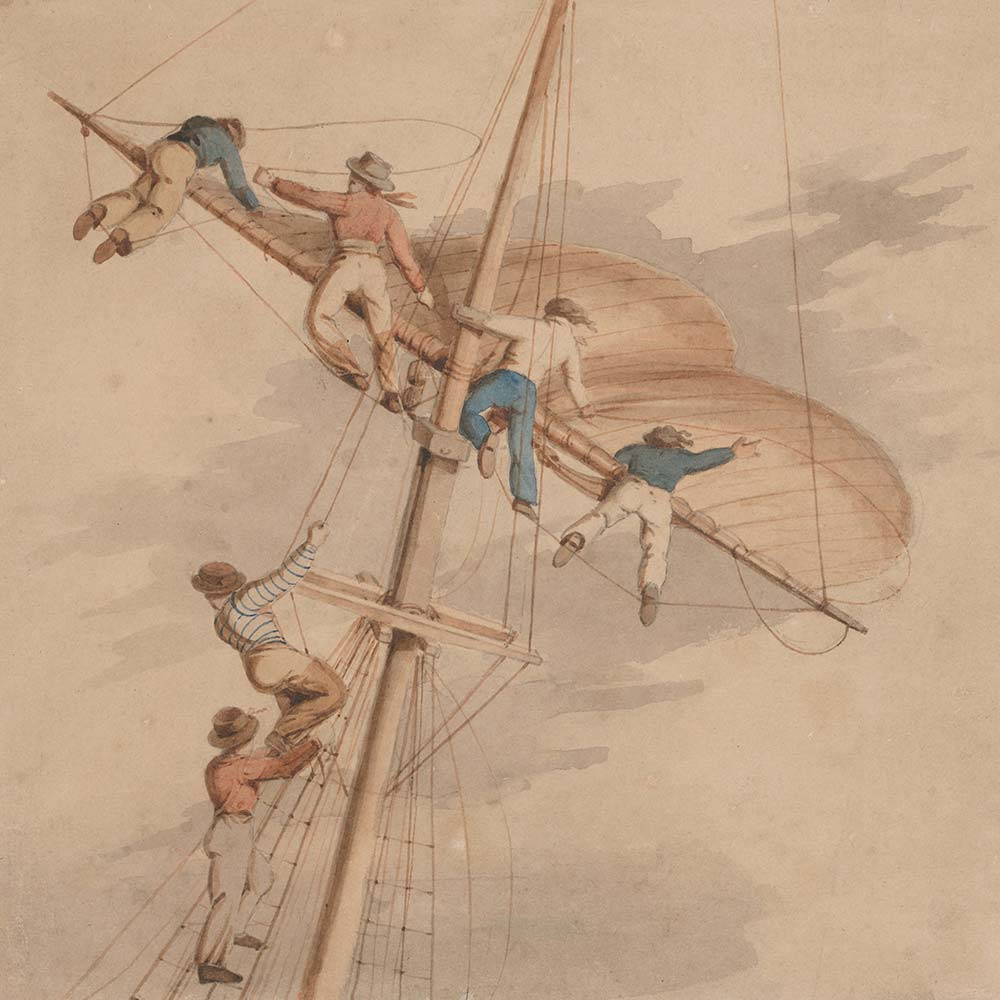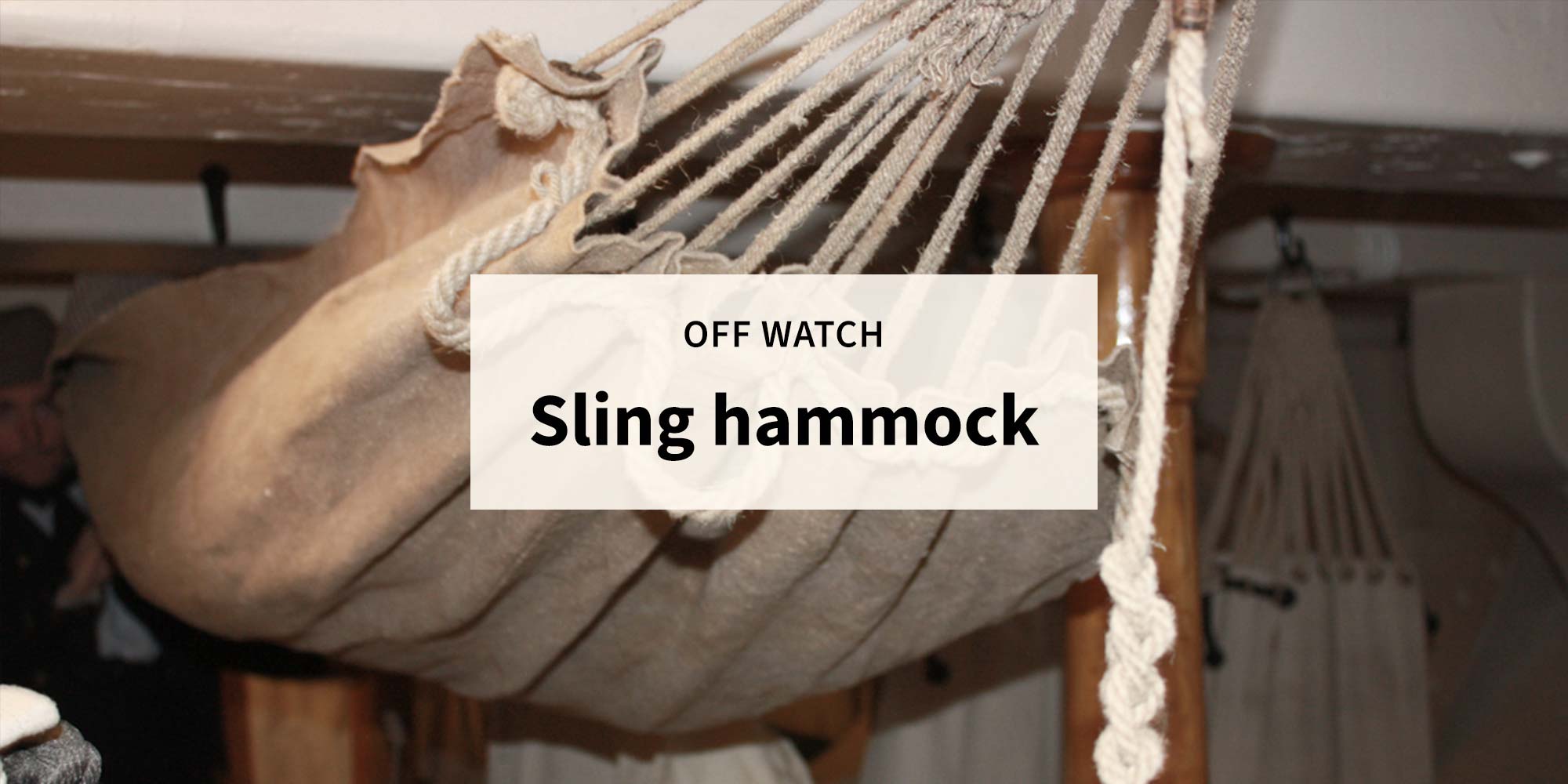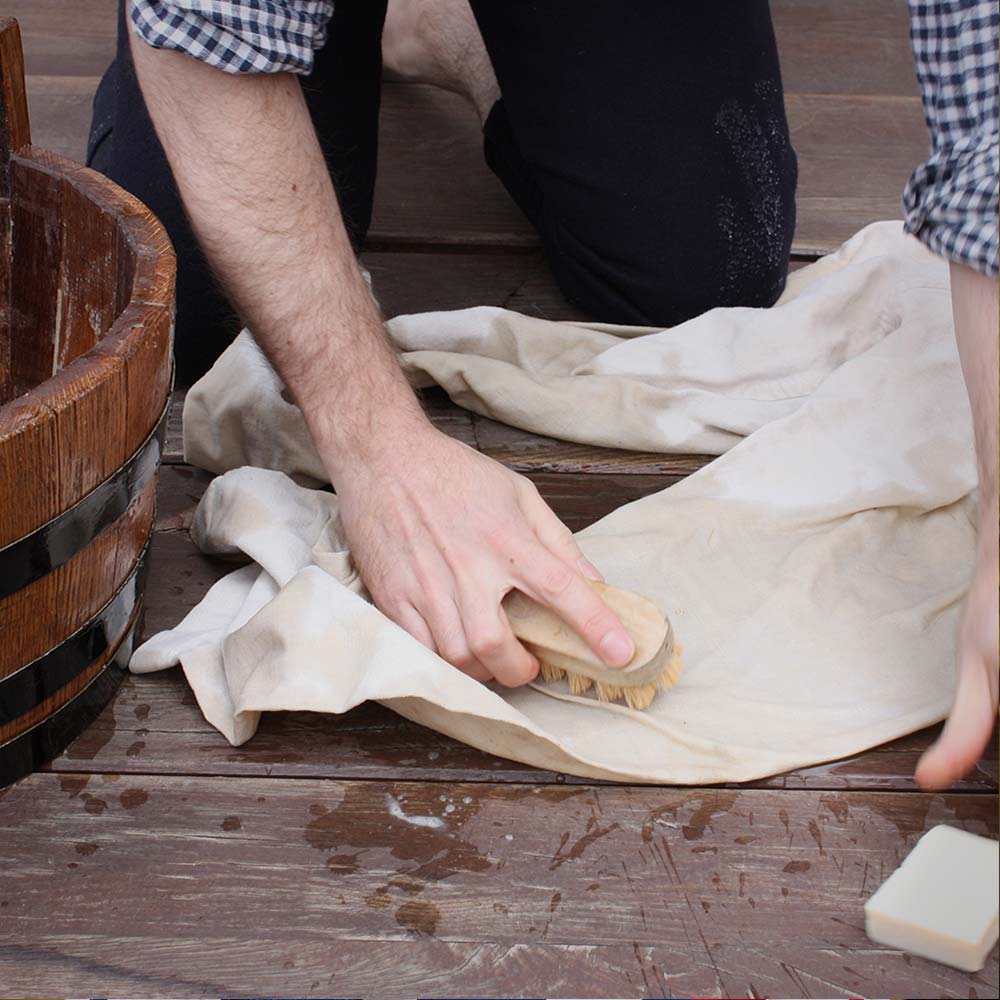“There is a daily routine onboard.
“A ship contains a set of human machinery…all moving with wonderful regularity and precision to the will of its machinist – the all-powerful captain.”
Thirty years from home; or, a voice from the main deck, being the experience of Samuel Leech…, first published in 1843.
Daily Activities: MEALTIME

“We sailors eat with our friends …

“As ship’s cook I prepare the food …
This animation was created by students at MASSART
“As distinguished officers, we eat at tables.
Daily Activities: SAILING

“Sailors have to know how to tie many knots.

How many sailors fell?
Balancing on a footrope 150 feet above the water…
in the dark of night
or in a rolling storm
or during the chaos of battle
…was dangerous. On board Constitution during the War of 1812, there are four instances recorded of sailors falling from the rigging. None survived.
Today's Crew: What is it like being aloft?
What is it like being aloft?
What does everyone do when?
Explore the crew’s watch duties.

“What time is it? Listen for the bells.
Ship's Bell
This is bell dates to 1765 and was purportedly removed from HMS Guerriere and used as a substitute for Constitution‘s bell, which was destroyed during the battle on August 19, 1812. The story is not confirmed by firsthand accounts, however. USS Constitution Museum Collection, 1954.1.Isaac Hull's Pocket Watch
The moving deck makes this watch completely inaccurate. We cannot use a regular watch or clock to keep time aboard ship.
On loan to the USS Constitution Museum from a Private Collection.Half-Hour Glass
In 1812, many crews still used half-hour glasses like this one to keep track of time at sea.
Morning Watch: 4am - 8am





Forenoon Watch: 8am - 12 noon
















Afternoon Watch: 12 noon - 4pm
















First Dogwatch: 4pm - 6pm
















Last Dogwatch: 6pm - 8pm
















First Watch: 8pm - 12am
















Middle Watch: 12am - 4am
















Daily Activities: CLEANING


How did sailors wash their clothes?
Sailors had two hours a week to scrub their clothing and hammocks. With hundreds of sailors competing for buckets filled with salt water and soap, many had to wait a long time or missed out completely. Clean clothes were tied to clotheslines and raised into the rigging to dry. The unlucky sailors who reported to duty in dirty clothes were punished.
Discipline
A sailor’s life was highly regulated and controlled by strict rules enforced by swift punishment. Sailors had to show obedience and respect to the officers, whose commands were law. The punishment varied according to the infraction and the captain’s discretion, ranging from withholding a sailor’s grog ration to flogging, a form of severe corporal punishment.


“My name is Moses Smith.
I was aloft shortening a sail when the man next to me left his part of the sail loose. When the lieutenant asked who was responsible, no one uttered a word. Sailors don’t tell on each other. He warned we’d all be flogged unless we told.
I didn’t want to be whipped, but I didn’t want to tell either. What would you do?”


How often were sailors flogged?
The frequency of flogging varied by captain. Flogging did not occur every day, but the threat of it was always present. When it did happen, all hands gathered to witness the punishment as a grotesque reminder of the officers’ control over the sailors.
According to the surviving records between 1812 and 1815, approximately 11 men were flogged for offenses ranging from desertion to smuggling liquor on board. During the same period, courts martial (military courts) awarded seven men between 50 and 100 lashes each for more grievous offenses, such as theft and mutinous conduct.